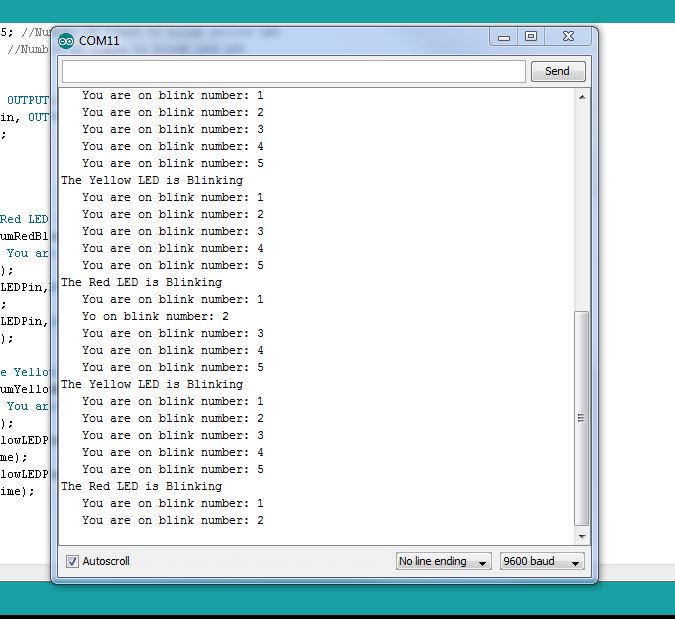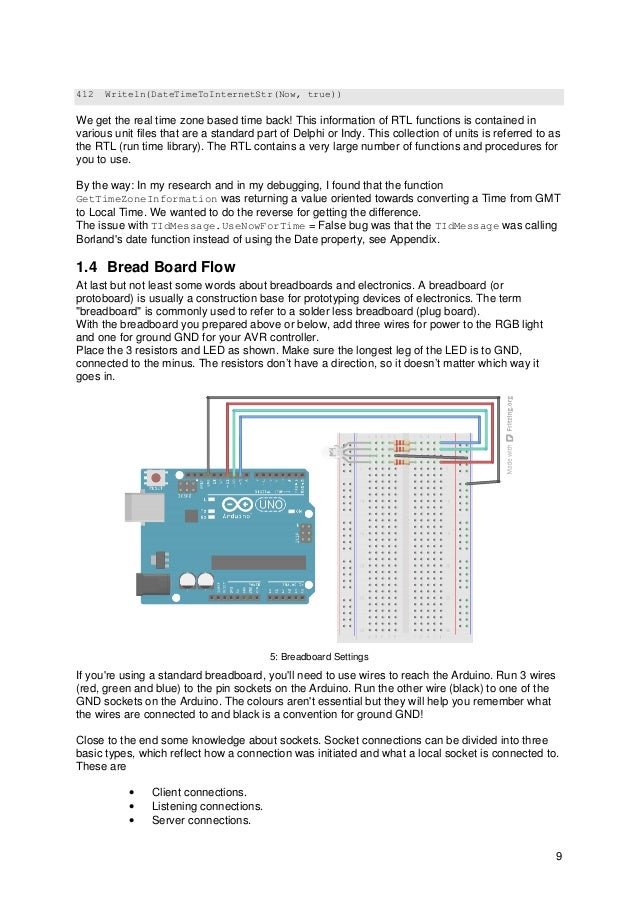- Arduino Serial Communication
- Arduino Delphi Serial Communication Linux Download
- Delphi Serial Communication
- Serial Communication Pdf
- Serial Communication Ppt
- What Is Serial Communication
Building a TCP/IP Linux server and daemonizing it. Communication with Arduino with the serial port provides mainly three functions: Serial.read() Serial.write() Serial.print() The first one has already been discussed in the previous recipes, as it is used to communicate commands from Delphi to Arduino. Let's move on to the next two. Using ActiveXperts Serial Port Component with Delphi. ActiveXperts Serial Port Component is a software development kit. Serial communication library for Linux. C++ Builder, Delphi incl. Embarcadero RAD XE2 XE3 XE4 XE5 XE6 XE8 Studio,CodeGear. Serial Data transmission. Arduino serial communication Search and download arduino serial communication.
I want to read a string from my Arduino via Usb(Serial).I made this script but it has a problem:
The problem is that the 'count' isn't right.For example, when i send 'Backspace' this is the output:
But on the arduino serial monitor it works fine.Does anyone know why the the 'count' isn't right and how to fix it?
RRUZ2 Answers
Arduino Serial Communication
As Remy said, when receiving data in serial communication you may have many events triggerin for the same string. In fact each byte is an event, but drivers usually buffer the data.
To know the end of your message you should add some char sequence at the end of this message. If you send the string from Arduino using Serial.println() instead of Serial.print(), then it will add a new line mark after the text. This way you just need to add the characters to the ListBox1.Items.Text property instead of using Add function. You need to allow the chars #10 and #13 to make this work.
Also, if you do it this way, you don't need to send the bell character (#7).
You are assuming a 1-to-1 relationship between the complete data and the event. There is no such guarantee. It may take multiple events to receive the complete data. The event is simply reporting that there is some data available at that moment. In your example, you likely received an event for 3 characters, and then received a second event for the remaining 6 characters. You called Add() twice, once for each portion of data, rather than once for the complete data.
As such, you have to analyze the data you are receiving, caching it as needed between events, and then call Add() only when you have complete data to display. For example:
Not the answer you're looking for? Browse other questions tagged delphiarduinousbdelphi-xe7 or ask your own question.
I have an RFID reader connected to an Arduino board. I'd like to connect to it over its serial interface, and whenever the RFID reader omits a signal ( when it has read an (RF)ID ), I'd like to retrieve it in my C++ program.
I already have the code for simply printing the RFID to serial from the Arduino.
What I don't know, is how to read it from C++ in Linux ?
I have looked at libserial, which looks straightforward. However, how can I have the C++ program react to a signal and then read the RFID, instead of listening continously? Is this necessary?
EDIT: In most examples I have read, the (c++) program sends input, and recieves output. I just want to listen and recieve output from the Arduino.
Diodeus - James MacFarlaneArduino Delphi Serial Communication Linux Download
Delphi Serial Communication
4 Answers
On unix you use the select() call to wait for an input.The select() call acts like a sleep - using no CPU until the kernel receives the hardware interrupt and triggers the select().
Martin BeckettMartin Beckett
I found the Boost::Asio library, which reads from serial interfaces asynchronously. Boost::Asio Documentation
meastpmeastpSerial Communication Pdf
The Communications part of the Interface section in the Arduino Playground has several examples of interfacing, including one with the Arduino as Linux TTY.
Try the Syntax and Programs forum and the Software Development forum on the Arduino site. There have been discussions about interfacing to many different languages and computers in the past.
And finally check out the Processing and Wiring sites. The Arduino IDE is based on the Processing language, and the Wiring environment and dev board is related to Arduino. Both sites have lots more examples and links to even more resources.
Edit: I just realized that I didn't answer your actual question. These are all general communications resources, but some may have hints towards how to alert the computer of a new RFID input.
 flamingLogos
flamingLogos
Serial Communication Ppt
flamingLogosHi I created a Simple library for this: cArduinohttps://github.com/ranma1988/cArduinoC++ can find auto find connect Arduino port, read, write